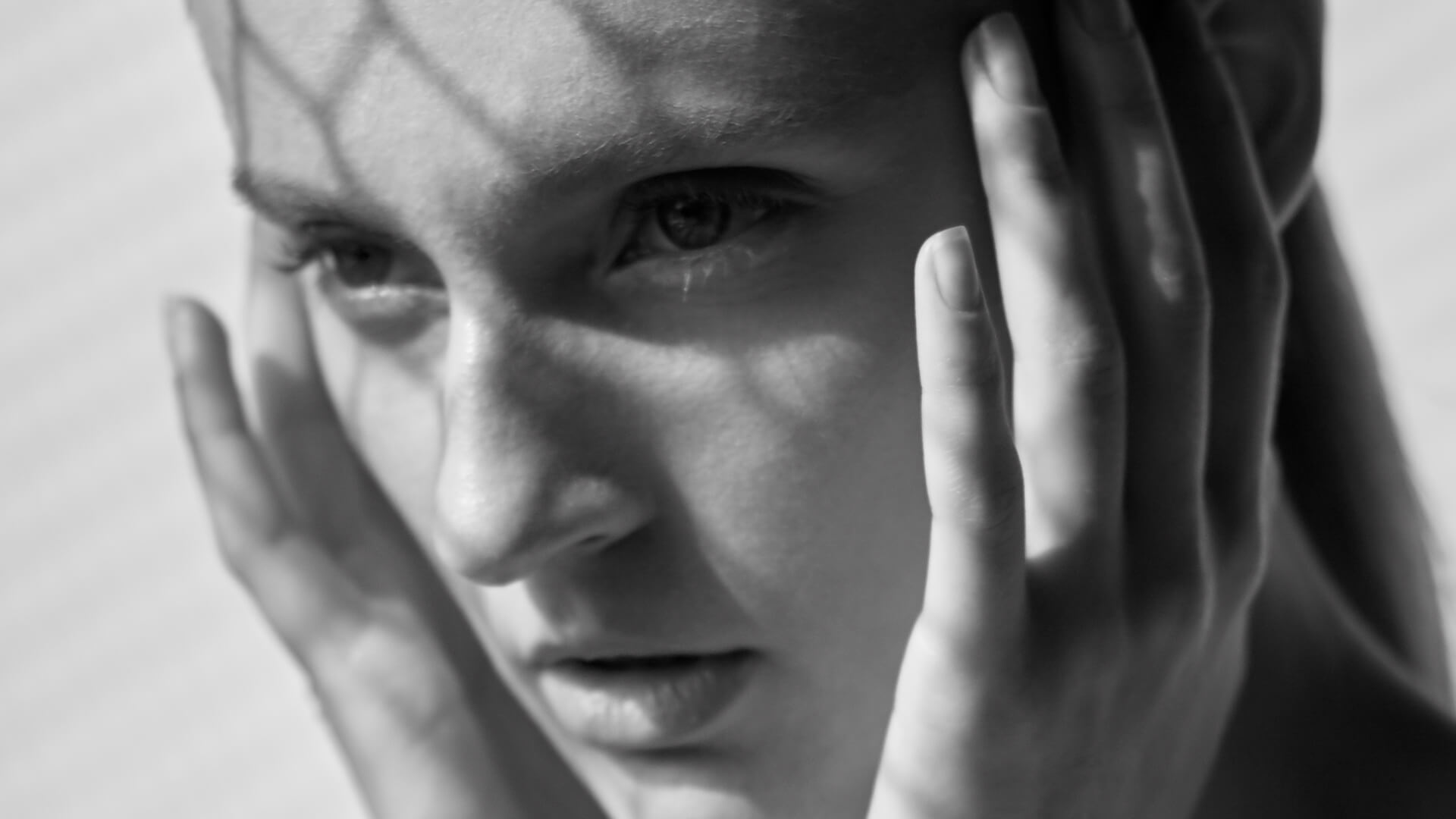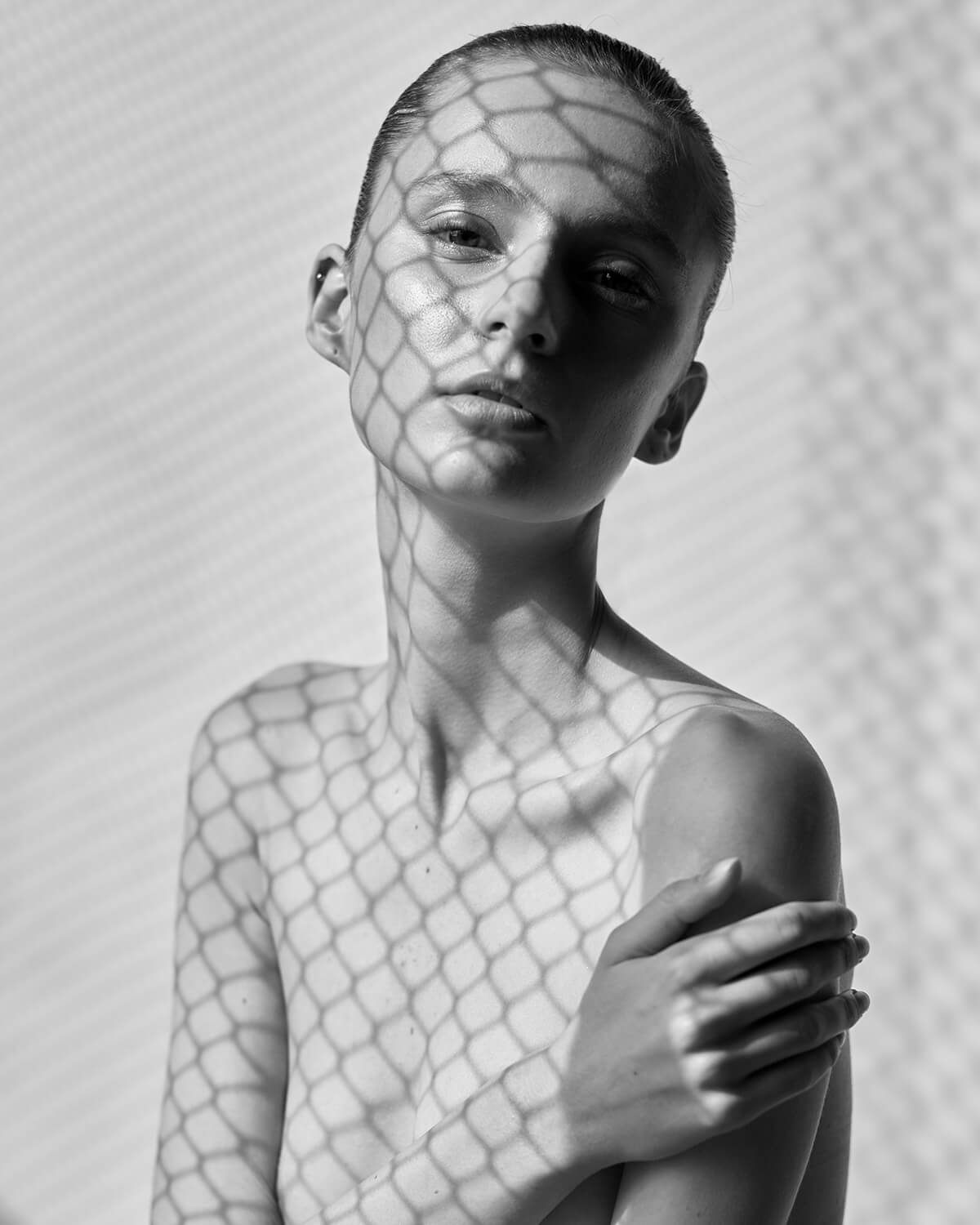
FASHION EDITOR
SANSHAI JIRAT SUBPISANKUL
PHOTOGRAPHER
AEKARAT UBONSRI
STORY
PILAN SRIVEERAKUL
All you need to know
about sunlight and sunscreen
WHAT EXACTLY ARE UV AND SPF?
The light from the sun passes through the earth’s atmosphere and brings with it Ultraviolet A and Ultraviolet B rays. UVA penetrates deeper into the skin and damages the skin’s collagen and elastin, creating lines and wrinkles. The intensity of UVA is consistent in summer and winter, and it can also pass through glass.
Meanwhile, UVB affects the outer layer of the skin. Therefore, the skin creates pigmentation to protect itself, and thus the skin turns darker when exposed to UVB for a long period of time. Prolonged exposure results in sunburn. UVB is at its most intense during 10am-2pm. In summer, UVB is more intense than in winter. UVB cannot pass through glass.
Sun-Protection-Factor (SPF) is the ability to protect the skin from the damages of UV rays. For instance, naked skin turns dark after 10 minutes in the sun. If you wear an SPF15 sunscreen, you will be fine for 150 minutes or 15 times the usual limit. The higher the SPF, the longer the protection. However, no sunscreen, no matter how high the SPF, is able to shield the skin from UV rays 100%.


HOW TO APPLY SUNSCREEN
I can’t stress enough that you need sunscreen every day, whether you’re heading outdoors or staying in your office. Choose the right level of protection. If your exposure to sunlight is minimum, SPF15 is enough. Wear sunscreen at least 15 minutes before going out and reapply every two hours if you’re outdoors because it might come off with your sweat (even if you’re wearing waterproof formula). Your sunscreen should contain Averbenzone or Parsol 1789 which can absorb UVA by 80%, and Titanium Dioxide which can protect the skin from both UVA and UVB without irritating the skin like other chemicals which bounce the rays off the skin. Choose the right sunscreen for your skin type — if you have oily or acne-prone skin, use water-based, gel or oil-free sunscreen to prevent clogging your pores.
The amount of sunscreen you need is a teaspoon for your face and neck. Lines on the neck are even harder to treat than facial lines. Wearing protective clothing can reduce the amount of UV rays your skin is exposed to, but even a small dose of exposure, in the long run, can also damage the skin. Even when you’re wearing a hat or long-sleeve shirt, UV rays can still penetrate through light or loosely woven clothing items.
If you want to have healthy body skin, always apply sunscreen on areas exposed to UV rays such as face, neck, and hand. Areas covered by clothes also need sunscreen. Sun protection is something to follow strictly and habitually. Just a few minutes of UV rays can deeply damage the skin.
FYI: SOMETHING YOU SHOULD KNOW
• Spots caused by UV rays take 15 years to fade.
• Your body needs sunlight to create vitamin D which strengthens the bones, but you only need to be exposed to the morning rays. Avoid being in the sun during 9am-4pm because the UV rays may damage your skin.
• Even when you’re indoors, you can still be exposed to UVA from sunlight that passes through glass, fluorescent light, and computer screens. If big cities, UV rays cause pollutants to generate circulating free radicals in the air.
• Start wearing sunscreen regularly at a young age to prevent possible skin concerns. Prevention is better than cure.
• Whether your skin is light or dark, you need to wear sunscreen to protect it from UVA and UVB.
BEAUTY INSIDER
EDITOR’S PICK

SHISEIDO
Clear Stick UV Protector SPF50+ PA++++ (15g 810 Baht)

GUERLIAN
Blanc De Perle UV Shield SPF 50/PA+++ (30ml 2,250 Baht)

ANESSA
Perfect UV Sunscreen Skincare Gel SPF50+ PA++++ (90g 805 Baht)

SHISEIDO
Perfect UV Protector SPF50+ PA++++ (50ml 1,275 Baht)

SHISEIDO
Clear Stick UV Protector SPF50+ PA++++ (15g 810 Baht)

GUERLIAN
Blanc De Perle UV Shield SPF 50/PA+++ (30ml 2,250 Baht)

ANESSA
Perfect UV Sunscreen Skincare Gel SPF50+ PA++++ (90g 805 Baht)

SHISEIDO
Perfect UV Protector SPF50+ PA++++ (50ml 1,275 Baht)

SHISEIDO
Clear Stick UV Protector SPF50+ PA++++ (15g 810 Baht)

GUERLIAN
Blanc De Perle UV Shield SPF 50/PA+++ (30ml 2,250 Baht)
BEAUTY INSIDER
*Prices are subject to change without prior notice.




 Shopping Online
Shopping Online